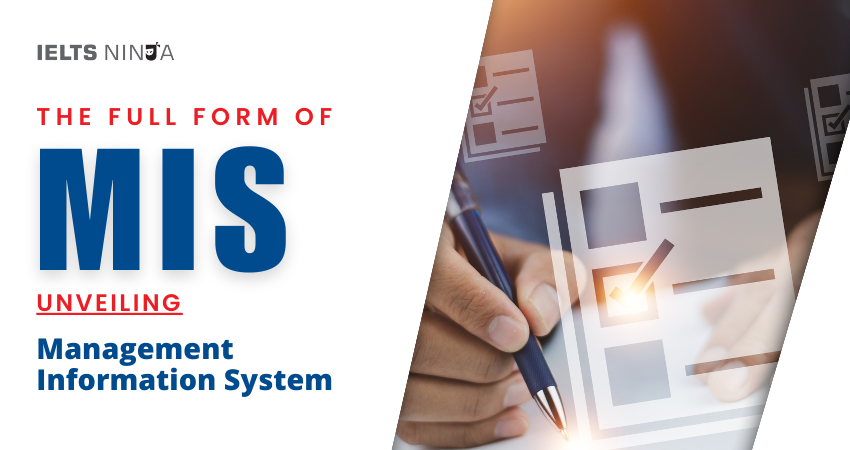In the world of business and technology, the full form of “MIS” stands for “Management Information System.” MIS is a specialized system that organizations use to collect, process, store, and disseminate information to support decision-making and other managerial functions. It plays a critical role in helping businesses and institutions manage their operations efficiently. In this comprehensive guide, we will explore the details of MIS, its components, benefits, and its significance in modern management.
What is MIS?
ए Management Information System (MIS) is a structured system within an organization that provides timely and relevant information to support decision-making, coordination, control, analysis, and visualization of an organization’s activities. MIS combines technology, people, processes, and data to assist managers and other users in making informed decisions.
Key Aspects of MIS
MIS’s Components:
MIS typically consists of the following components:
- Data: Raw facts and figures collected from various sources within and outside the organization.
- Information: Processed data that is organized, meaningful, and relevant for decision-making.
- तकनीकी: Hardware, software, and networks used to capture, store, process, and transmit information.
- People: The individuals who manage and use the MIS, including IT professionals, data analysts, and decision-makers.
- Processes: Defined procedures and workflows for data collection, processing, and reporting.
Functions of MIS:
MIS serves several essential functions in an organization:
- Data Collection: It gathers data from internal and external sources, such as sales records, customer feedback, and market trends.
- Data Processing: MIS processes and transforms raw data into meaningful information through various operations like sorting, summarizing, and calculations.
- Data Storage: Information is stored in databases and repositories for easy access and retrieval.
- Information Retrieval: Users can access relevant information quickly and efficiently.
- Analysis and Reporting: MIS enables data analysis and generates reports, charts, and dashboards for decision-makers.
Benefits of MIS:
Implementing an MIS offers numerous advantages:
- Improved Decision-Making: Managers can make informed decisions based on accurate and up-to-date information.
- क्षमता: Automation of routine tasks reduces manual effort and increases productivity.
- Competitive Advantage: Organizations can respond quickly to market changes and gain a competitive edge.
- Data Accuracy: MIS ensures data accuracy and consistency, minimizing errors.
- Strategic Planning: It supports long-term planning and strategy development.
यह भी पढ़ें: सर्वश्रेष्ठ ऑनलाइन आईईएलटीएस कोचिंग एवं प्रशिक्षण अकादमी
Types of MIS:
There are various types of MIS tailored to specific organizational needs, including:
- Executive Information Systems (EIS):
Designed for top-level executives, providing high-level summaries and forecasts. - Decision Support Systems (DSS):
Assists in complex decision-making through data analysis and modeling. - Enterprise Resource Planning (ERP):
Integrates various business functions, such as finance, HR, and inventory, into a single system. - Customer Relationship Management (CRM):
Focuses on managing customer data and interactions.
Challenges in MIS:
Challenges in implementing MIS include data security, system integration, and the need for ongoing maintenance and updates.
निष्कर्ष
ए Management Information System (MIS) is a vital tool for organizations seeking to manage their operations efficiently and make informed decisions. By collecting, processing, and presenting relevant data, MIS empowers managers and decision-makers to navigate the complexities of modern business effectively. As technology continues to advance, the role and capabilities of MIS are expected to expand, further enhancing its importance in the business world.








